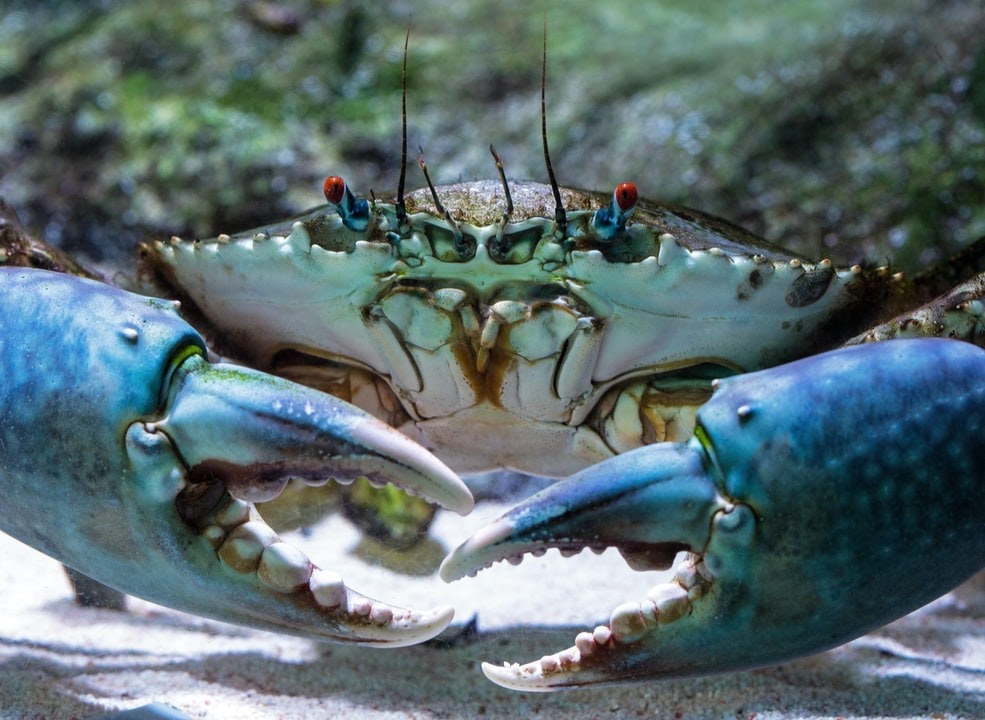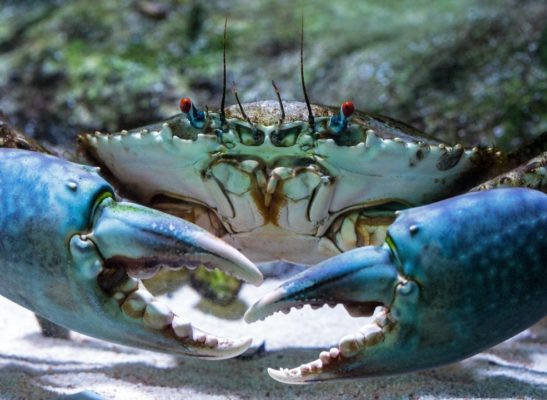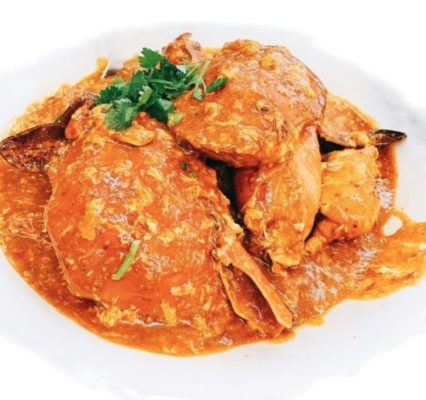Blog
How To Pick Live Crabs At The Supermarket
Crabs are a delicious addition to any meal, and are considered a luxury in this day and age. Cleaning and cooking crabs isn’t difficult at all, making them ideal for meals where you want to add that extra classy touch.
Crabs are readily available in almost all of the supermarkets and wet markets in Singapore. When you shop, you of course want to make sure that you choose the best crabs available.
A good crab won’t just be thick and juicy, it will have sweet and flavorful flesh too. To choose the best and juiciest crabs available, you can follow the techniques listed below.
Singapore has a wide variety of crabs, including flower crabs, snow crabs, king crabs and mud crabs. No matter what crabs you’re buying, the basic methods of choosing the best ones remain the same.
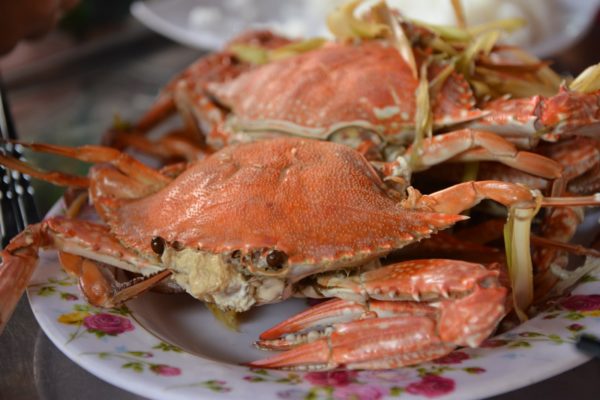
Techniques on Picking the Best Live Crabs
The first thing about picking crabs is understanding their life cycles. Crabs are crustaceans and as such, they undergo ‘molting’ regularly as they grow in size.
Molting is a process whereby when a crustacean with a hard shell has grown to the maximum size of its current shell, it will break out of it, revealing a softer and larger shell underneath.
This softer shell will harden up after some time, and then the cycle repeats again when the crab has grown enough flesh to fill out this next shell.
1. Choosing crabs with worn out shells
When a crab is nearing its next molting process, it will have filled out its current shell with juicy flesh. Hence, you’ll get a crab that’s filled out and delicious. The signs that a crab is nearing its next molting is that its shell and pincers will be worn out. Another thing you can observe is that the patterns on its pincers (called mottling) will be blurred and faded.
This is in contrast to a crab that has just molted and changed its shell. Crabs that have just molted will have pincer teeth that are nice and pointy, and have shell mottling that are clear and defined.
For this same reason, you should also go for crabs that have shells that are dull and worn. Turn them over and observe their underbelly for scratches and signs of wear and tear. The more worn out the shells are, the better.
Crabs with bright, shiny and smooth shells are an indication that the shells are new, and therefore they’ve just molted and haven’t grown into their current shells yet.
This crab is nearing its next molting. You can see that its shell teeth are blunt and the mottling patterns on its pincers are blurred and undefined. Source: Unsplash
2. Crabs that are Alive and Alert
Fresh crabs are absolutely necessary when cooking your favorite dish. The fresher the crabs, the sweeter their flesh.
Therefore, when buying crabs at the supermarket, make sure you buy a crab that’s alive. Check their eyes and their claw movements. A crab that’s still alive will attempt to move its claws when picked up.
They will be moving their eyes too, if they’re still healthy. The best crabs are the ones that can be both active and alert.
3. A Hard Underbelly
If you turn a crab over, a good one should have a hard and firm underbelly. This is because the older the crab’s shell, the firmer it gets. A firm underbelly is an indication that the shell is not new.
Crabs that have just molted have softer underbellies that are bright and shiny. This is something you want to avoid. Instead, go for crabs with dull and firm underbellies as these are the ones that have had their current shells for longer and have grown into them more.
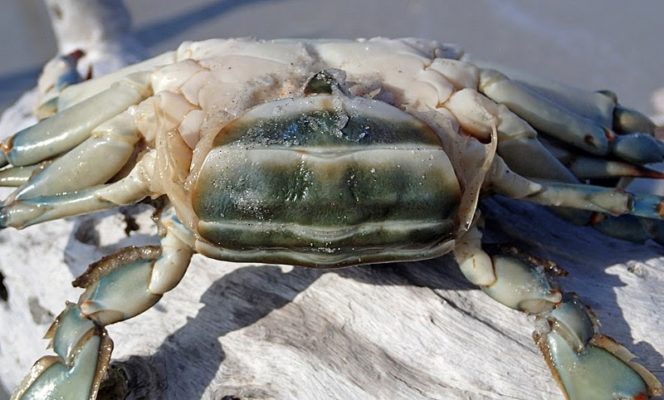
4. Pressing Down On the Abdominal Plate
If you’re able to handle the crabs freely, turn them around and check them by pressing them on their middle section where there’s an abdominal plate.
For male crabs, this abdominal plate would be narrower and thinner whilst females have abdominal plates that are rounder and wider.
Sometimes, a crab may show all the signs that it has been growing in its current shell for a long time. It may have worn down claw teeth, a dull shell and more. However, if it has been kept without food for a long time, it will begin using its reserve energy stores and this will cause it to lose some of its flesh.
Gently press down on the lower middle portion of their abdominal plate. A fresh crab with lots of flesh should not have any or much room for indentation whereas one that has less flesh will have a deeper indentation when you press.
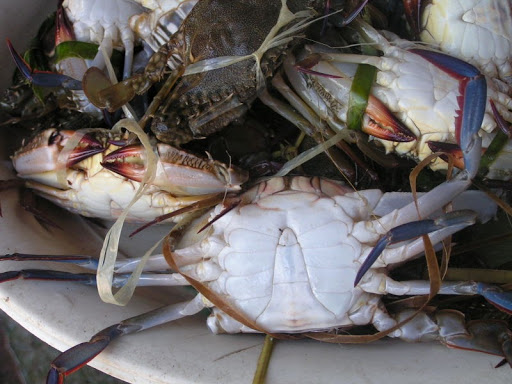
5. Watch Out for Unsavory Smells
Most crabs that are alive will not give out any smells, whether they’re fleshy or not. Occasionally, you may encounter a crab with a strong ammonia odor. This is sometimes the case with crabs that are older.
Therefore, while making your choice, you should try and use your sense of smell too. A crab that’s giving out an ammonia smell doesn’t necessarily mean it’s dead. It can be alive and still give out this smell.
6. Choose Crabs Stored in a Dry Container
Crabs that are stored in water tend to move around a lot more, and thereby consume more of their storage energy, thereby yielding less flesh after being cooked.
On the other hand, crabs in dry containers, such as styrofoam boxes, do not move as much and therefore conserve their flesh better.
This is one tip that’s pretty useful if you’re in a supermarket where you can see crabs being stored in different ways.
Source: 8 Crabs
If you’re craving crabs cooked in Singapore’s favorite styles, why not give 8 Crabs a visit. 8 Crabs delivers island-wide within one hour after ordering, so you get your crab fix any day of the week.


